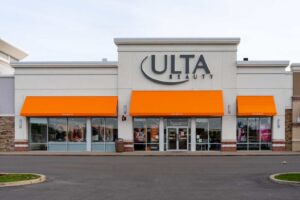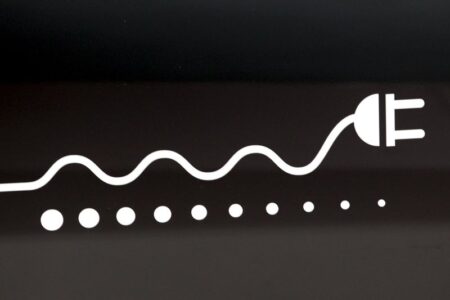© Reuters.
In a recent earnings call, i-80 Gold Corp (IAU) reported its financial and operating results for the fourth quarter and the full year of 2023. The company highlighted significant progress in its projects, including the acquisition of Paycore, securing 100% ownership of the high-grade FAD deposit, and advancing the Granite Creek project. i-80 Gold Corp announced gold sales of 11,049 ounces in the fourth quarter, generating $25.8 million in revenue, and ended the year with substantial cash and inventory assets. The company’s focus remains on becoming the second-largest gold producer in the United States, with a strong presence in Nevada’s prolific gold district.
Key Takeaways
- i-80 Gold Corp achieved significant milestones in 2023, including the acquisition of Paycore.
- The company reported Q4 gold sales of 11,049 ounces, with $25.8 million in revenue.
- A partnership agreement to advance the Ruby Hill project is expected in Q2 2024.
- i-80 Gold Corp is focused on becoming the second-largest gold producer in the U.S.
- The company has over 6 million ounces of measured and indicated resources and over 8 million ounces of inferred gold resources.
- Two processing facilities, including an Autoclave, provide a competitive edge in processing refractory mineralization.
Company Outlook
- i-80 Gold Corp expects to deliver its first feasibility study on Granite Creek and announce full production for the site.
- The company is optimistic about the future of the gold sector and anticipates increased interest in gold companies.
Bearish Highlights
- The company did not provide specific details about their ore selling agreement.
Bullish Highlights
- i-80 Gold Corp has secured sufficient capital to advance its Nevada gold production strategy.
- The company has significant expansion potential at the Granite Creek project and other areas.
- Drilling results in the South Pacific zone indicated high-grade mineralization, with intercepts exceeding 8 grams per ton.
Misses
- There were no specific misses reported during the earnings call.
Q&A Highlights
- The company is ramping up production with a steady increase in tonnage expected throughout the year.
- Entry into the South Pacific zone is anticipated around the middle of the year.
- Further questions can be directed to Matt Gili or the company’s offices.
i-80 Gold Corp’s earnings call revealed a robust year of progress and development for the company. With the acquisition of key assets and the advancement of its Nevada projects, the company is well-positioned for future growth in the gold sector. Its strategic focus on increasing production and resources, coupled with a strong management team and competitive processing facilities, sets the stage for i-80 Gold Corp to potentially become a leading gold producer in the United States. The company’s optimism is bolstered by its significant gold and silver resources and the high-grade mineralization of its deposits. As i-80 Gold Corp continues to expand its operations and advance its projects, the market will be watching for the results of its feasibility studies and the advancement of the Ruby Hill project partnership in the coming quarters.
InvestingPro Insights
i-80 Gold Corp (IAU) has shown a commendable performance in its recent earnings call, yet there are several financial metrics and analyst insights that investors should consider. Here are some key InvestingPro Insights to help evaluate i-80 Gold Corp’s current financial health and future prospects.
InvestingPro Data:
- Market Cap (Adjusted): 502.53M USD
- P/E Ratio (Adjusted) last twelve months as of Q4 2023: -7.42
- Revenue Growth last twelve months as of Q4 2023: 48.57%
InvestingPro Tips:
1. Analysts anticipate sales growth in the current year, aligning with i-80 Gold Corp’s reported revenue growth and reinforcing the company’s growth trajectory.
2. The company is expected to be profitable this year according to analyst predictions, which could signal a turnaround from the negative P/E ratio reported in the last twelve months as of Q4 2023.
While i-80 Gold Corp’s stock price movements have been quite volatile, the company has experienced a strong return over the last month. This could be a reflection of investor confidence in the company’s strategic acquisitions and project advancements. However, it’s important to note that the company is quickly burning through cash and short-term obligations exceed liquid assets, which may raise concerns about its financial stability.
For investors seeking a more comprehensive analysis, there are an additional 7 InvestingPro Tips available at https://www.investing.com/pro/IAUX. These tips can provide deeper insights into i-80 Gold Corp’s financials and help investors make more informed decisions. Remember to use the coupon code PRONEWS24 to get an additional 10% off a yearly or biyearly Pro and Pro+ subscription.
Full transcript – I 80 Gold NYQ (IAUX) Q4 2023:
Operator: Good morning. My name is Ludi [ph] and I’ll be your conference operator today. At this time, I would like to welcome everyone to the i-80 Gold Corp. Fourth Quarter and Full Year 2023 Financial and Operating Results Conference Call. [Operator Instructions] Mr. Downie, you may begin your conference.
Ewan Downie: Hi and thank you for attending today’s Q4 and year-end 2023 financial and operating results presentation. We — on the second slide of the presentation, the people who are attending on behalf of the company are: myself, the CEO; Matt Gili, the President and Chief Operating Officer; Ryan Snow, our CFO; and Matt Gollat, Executive Vice President. At the end of the presentation, we will take a few questions. We’ve got another commitment shortly after it ends, so we will only be taking 2 or 3 but as always, people can contact the company if they have any further questions. Slide 3 is our standard disclaimer statement. I urge everybody to read it prior to or in conjunction with this presentation today. On Slide 4, 2023, despite the challenging market conditions was a year that we realized numerous achievements. The Ruby Hill property was consolidated through the acquisition of Paycore that secured 100% of the high-grade FAD deposit. That is expected to be one of the highest grade polymetallic deposits, if not the highest grade polymetallic deposit in our portfolio once we bring it to 43-101 resource. We completed more than 60,000 meters of drilling to increase the quality of our mineral resources and also to expand mineralization and we realize significant success in those exploration and expansion programs. We also completed nearly 4,000 meters of underground development as we continued to do the test mining program at Granite Creek and we also secured a long-term dewatering strategy that included the installation of a new deeper well to enhance our dewatering capabilities there. That will allow us to progress to develop the South Pacific zone that is expected to become the primary deposit in that — at that project. We also were able to secure in the difficult market, sufficient capital to advance our strategy to become the second largest producer in the State of Nevada. The realization of a joint venture, we announced during the year, our intention to bring in a partner to assist in the advancement of the Ruby Hill project. That was done partially to assist with our financing capabilities and also a partner who can assist when it comes to polymetallic mineralization. That partnership agreements are actively being advanced and we expect those to — that partnership to be announced during the second quarter of this year. The exploration success we had at all projects was, in my opinion, very significant. The reconciliation in the definition drilling both at McCoy-Cove and at Granite Creek has been quite exceptional. We’ll be touching on that in our upcoming slides. The delineation of the expansion in the Hilltop target at Ruby Hill that remains wide open was — saw some of the best results we released as a company to-date and we also demonstrated that both the FAD deposit and the Blackjack deposits are also wide open for expansion. And we get to Ruby Hill, I’ll also talk about some — a single hole we drilled for the expansion of gold that intersected a very significant intercept. So with that, I’m going to hand over the next few slides to our Chief Financial Officer, Ryan Snow, to talk about the gold we did sell. We haven’t yet declared commercial production. We are still doing additional drilling to firm up reserves. And with that, we expect to ultimately deliver our first feasibility study on Granite Creek and also the announcement of full production for that site. So with that, I’ll hand it over to Ryan.
Ryan Snow: Thanks, Ewan. Yesterday after market close, the company reported our financial statements and MD&A for the fourth quarter and full year of 2023. They can be found on SEDAR, EDGAR and our website. On Slide 5 of the presentation, we provide a graph of our production and sales by quarter for the year. This production is from residual leaching activities at both Ruby Hill and Lone Tree and the oxide material on leach from Granite Creek that we have produced and sold. In addition, in the fourth quarter, we sold 29,512 tons of sulfide mineralized material from Granite Creek, containing approximately 7,700 ounces. Sales were 11,049 ounces for the quarter and 22,312 ounces for the year, including the sulfide mineralized material. As discussed in the Q3 update, the company saw a significant increase in gold sales in Q4 related to the sale of the sulfide material. In addition to the gold ounces sold, the company sold 31,711 tons of mineralized material under the ore purchase agreement in the quarter, bringing the year-to-date total to 54,421 tons of mineralized materials sold. These sales generated revenue of $6.5 million and $13.8 million, respectively. Additional highlights on Slide 6 of the presentation show our revenue for the quarter of $25.8 million, bringing year-to-date revenue to $54.9 million. The company generated mine operating income of $2.6 million for the fourth quarter, reducing the year-to-date mine operating loss to $5.1 million. The mine operating losses year-to-date were primarily the result of write-downs of leach pad inventory at both Ruby Hill and Lone Tree, totaling $9.9 million. The company reported a net loss for the quarter of $31.9 million or $0.11 per share. When adjusted for the impact of mark-to-market losses on the company’s convertible debt, outstanding warrants, gold prepaid and silver purchase and sale agreements, the loss was $21.5 million or $0.07 per share. For the year, the company was in a loss position of $65.2 million or $0.24 per share. And when adjusted for the items previously mentioned, reported adjusted loss for the year of $86.9 million or $0.32 per share. During the quarter, the company continued to invest in exploration, evaluation and predevelopment with $8.8 million invested, bringing the total 2023 investments to $38.9 million. This investment continued to produce many great assay results, a summary of which were provided in our press release yesterday and will be touched on later in this call. Slide 7 of the presentation highlights the company’s liquidity position. In 2024, the company raised sufficient capital to advance our strategy. We made the first, second, third and fourth contingent payments related to the acquisition of Ruby Hill totaling $47 million, of which approximately half was cash and we ended the year with $16.6 million in cash, $44 million in restricted cash and had an inventory balance of $11.4 million. Finally, I’d like to point out that the subsequent to year-end, the company completed a private placement of shares totaling approximately CAD 23 million. Now, I’ll turn the call back over to Ewan Downie.
Ewan Downie: Thank you, Ryan. So I’m going to talk a bit about what we’ve done as a company during ’23 and what we’re looking to achieve here in 2024. I think we’ve seen a pretty significant — we’ve seen a pretty significant increase in gold price early this year and that’s starting to translate into some additional interest in the gold sector; interest that we didn’t see very much in 2023 as most gold investors and gold mining companies can attest to. However, I think there’s the platform for gold here to move significantly higher, has a perfect setup with the debt of various countries, including the United States, I think, underpins the value of gold and assuming that there is going to be some reduction in the interest rate levels, I would expect that, that will be a perfect storm for gold to appreciate significantly higher. So I’m looking forward to a very strong year for the gold sector for the gold price. And with that, we should see improved interest for gold companies. So looking at Slide 8 of our presentation, i-80 Gold is a pure-play gold producer focused entirely on the United States. 100% of our projects are in Nevada. Nevada is currently ranked as one of the world’s most favorable mining jurisdictions and is currently ranked number 1 by the Fraser Institute. We are currently one of the largest holders of gold and silver resources in all of the United States and we’re looking to transition those resources into production over the next several years to become the second largest gold producer in the United States on a gold equivalent basis. We’ve been very successful at building a very strong management team and operations team in Nevada and that’s headed by Matt Gili, who’s our President and runs the Reno office for the company. Looking at some of the team on Slide 9, we’ve — this team has very deep experience in building operating mines in Nevada and also in construction of plants, including refractory plants which is very important for the longevity of a company in the state. On the next slide, Slide 10. Why are we in Nevada only? Primarily because it is a great state for working. There’s security of land ownership, very stable government, long-standing history of being able to permit and build mines almost like no other place I’ve ever worked. And an interesting statistic is, if Nevada were a country, it would rank amongst the world’s top 5 gold producing nations. And that’s significant, especially when we see some of the issues that have been happening globally with the Russia-Ukraine conflict, we’ve seen mines in Russia taken away from North American companies. We’ve recently seen issues in Panama, also in Kyrgyzstan, where a mine was confiscated. So that I think it’s never been more important with the kind of political turmoil we’re seeing around the world to be in safe jurisdictions to develop mines and never for the U.S. importance, has it been more important to see development of operations in their own country rather than looking for metals elsewhere. Nevada is currently ranked number 1 by the Fraser Institute in terms of investment attractiveness and policy perception. And we operate on brownfield sites that are either fully permitted or essentially on their way to being fully permitted for operations and we have 2 existing permitted and constructed processing facilities. Slide 11 is really an introduction to where we are. We’re not all over Nevada and we’re actually located in what I call the central — the North Central District of Nevada. That’s the portion — the postage stamp you see on Slide 11 within the state of Nevada that is host to the Carlin, Battle Mountain and Getchell trends. These trends collectively represent the world’s most productive gold district. And the largest producer in this area is Nevada Gold Mines which is the Barrick-Newmont JV. All of their operations are shown in this picture. And if Nevada Gold Mines, we’re a separate company from its 2 owners, that are the largest and the second largest gold producers, Nevada Gold Mines would actually be the fourth largest gold producing company in the world and all of their production comes in this region. We’ve been very successful at assembling a portfolio of projects. We have 5 active project areas within this North Central District, collectively now with 6.465 million ounces of measured and indicated resources, over 8 million ounces of inferred gold resources and combined M&I and inferred over 180 million ounces of silver. In addition to that, we have demonstrated that we — or we have defined 3 very significant polymetallic deposits at Ruby Hill, those deposits are not yet included in this resource as we are currently working now towards resource, moving those 3 deposits to 43-101 resource for release to the public probably about midyear this year. That will include the FAD, the Hilltop and the Blackjack deposits. So we do expect to see a pretty material increase in our overall resources. The projects that you see in this area are range from being down in the South are Ruby Hill project which is our flagship project is in the — what we call the Eureka district at the South end of the Carlin Trend. McCoy-Cove, immediately South of the Phoenix operation of Nevada Gold Mines is our core gold project. The Lone Tree processing facility sits right on the Interstate 80 or the i-80 highway. And to the North of that, up adjacent to the Twin Creeks operation or Twin Creeks and Turquoise Ridge operation of Nevada Gold Mines is our Granite Creek project. On the next slide, Slide 12, we show the location of our 2 processing facilities. And this is what I believe really gives us a competitive advantage is — in the mining industry, one of the more difficult initiatives after you complete drilling out a successful deposit is actually getting a permit and then building your facility. So we are quite blessed to have 2 existing permitted and constructed processing facilities. The Lone Tree facility includes an Autoclave. And Autoclaves and Roasters are extremely important in Nevada as the easier to process oxide deposits have been largely depleted or at least the higher grade oxide deposits in the states have been largely completed. And over the past couple of decades, most production, at least for Nevada Gold Mines, has transitioned to deeper sulfide or higher grade sulfide mineralization which is most often refractory in the State of Nevada. So if you don’t have the ability to process refractory mineralization, your future in the State, in my opinion, is very limited. And we are quite fortunate that we were able to secure the Lone Tree facility from Nevada Gold Mines about 2 years ago and are looking to implement it to becoming a core part of our growth strategy over the next several years. We are also mining significant oxide mineralization out of the Granite Creek operation and we were able to secure a sale of that material. So we reported as revenue rather than ounces sold but we have been successful at negotiating a contract to sell those ounces. And you see that in the revenue of the company for the year of 2023, with really a record quarter for sales, both of our gold and oxide material occurring in the fourth quarter. Slide 13, I’ll just quickly touch on our total resources. This shows these — this graph shows total resources held by companies in the State of Nevada. Obviously, Nevada Gold Mines, the large producer in the state, is the largest — has the most significant resource base. We currently sit number 3 but we are expecting to see significant increases in resources over the next couple of years as we continue to drill out our deposits and we bring more importantly, the polymetallic mineralized deposits this year into 43-101 resource. The other thing that I think really stands out in terms of our projects, as shown on Slide 14, is the grades. We don’t want people to forget that we do have 3 significant open pit deposits within our portfolio that, in our opinion, represent the next stage of growth for production for the company. These deposits are not included in our near-term plans but are going to be included in our longer term sort of our 10-year vision for the company. The Granite Creek open pit project which is an oxide pit has a grade of over 1.3 grams per ton which would make it one of the highest grade oxide projects in the United States. That, as I said, isn’t being constructed in the next couple of years in our plan but it is definitely the next project when we look at what we want to do. The underground deposits rank amongst the highest you’ll find anywhere in North America, both Cove and Granite Creek have M&I grades in excess of 10 grams per ton. We haven’t released the new resource yet for Ruby Deeps but based on the work we’ve done and some of the preliminary economic work we’ve completed, we are definitely expecting to see a significant increase in the grade of Ruby Deeps when we publish our next resource. Slide 15 is showing our longer-term plan. Our plan is to sequence our 2 processing facilities. So at Lone Tree, we have the autoclave facility. The plan is to construct 3 underground operations or high-grade underground gold mining operations to feed that facility. And we need those 3 facilities running in order to start the autoclave facility. Cove is, even though we have done the underground program, the first phase of the underground there, is actually the third that we expect to come online. It’s the timing of Cove that will realize the timing of our plan to start Lone Tree. In advance of that, though, we are looking to potentially start up the Ruby Hill complex. Ruby Hill, we have completed the first phase of engineering work or the work that would be required to convert the plant you see in the lower image from a gold plant to a flotation base metal plan. The estimate for the capital for that project was well under $100 million. So a very limited capital project to construct that or to convert that facility to meet our polymetallic needs, is something we are looking at potentially fast-tracking as early as later in ’24 or in 2025, more likely would be the start-up of the conversion of that plant. That funding of that we expect would largely come from our incoming partner once we complete all of the transactional documents that are required to instill the formal joint venture between ourselves and the third-party. Slide 16 is a view of the Lone Tree mine. The Lone Tree mine site, we are continuing to do residual leaching on the heap leach pad, you see in the background. We are continuing to get gold ounces, as you could see in our year-end results and that is continuing into 2024 from this facility. Our central core cutting facility and assay lab. We have our own operational assay lab at this site and we have the autoclave facility shown here. I will point out that only 2 companies in the United States have autoclaves, ourselves and Nevada Gold Mines. So that’s what really gives us a competitive advantage. And the fact, as you can see here that this site is permitted. It is constructed. There’s grid power, as you can see, roads. If we were able to permit and rebuild this site, I would expect it would be multiples of our current market cap to get a facility like this. It also contains a 1.8 million ton a year flotation circuit and that flotation circuit could be used for alternative types of deposits, if we were able to either find one or secure one in the area, or if we were able to develop sufficient refractory ore, we could look at using that flotation circuit as a second crushing facility and add an autoclave vessel if we wanted to increase our refractory production coming out of this site. So there is a lot of optionality that this plant gives us to grow in the future if we continue to be successful at finding new deposits and making those large enough that we may one day consider going larger in terms of production. Granite Creek, as shown on Slide 17, is our most advanced project. Essentially, this is what we’re looking to repeat almost identically at both Ruby Hill and Cove which is putting underground declines, either proximal to or within existing pits or historic mine working. So these are already disturbed areas, as you can see and makes the permitting process much smoother because these are not greenfield sites. On Slide 18, I really like to highlight the location of the Granite Creek project on the image on the right. So immediately to the North, you can see at Twin Creeks is where the processing facility of Nevada Gold Mines is in this area. The Turquoise Ridge mine occurs immediately on strike to the North of our Granite Creek mine and is the third largest gold-producing mine in the United States currently. This very large operation, Twin Creeks and Turquoise Ridge have 40 million to 50 million ounces of production reserves and resources, making it what we truly term as an elephant type deposit. Our mineralization at Granite Creek is immediately on trend to the South in the same rock types and essentially the metallurgical characteristics of the mineralization is identical. The large fault structure that runs along the East edge of the intrusive complex is a controlling feature for the gold mineralization here and our property covers approximately 6 kilometers of that stratigraphy along strike from the Turquoise Ridge operation. Slide 19 is just showing some of the success we’ve had over the last couple of years, the delineation of the South Pacific zone which is shown in red to the North of the Ogee Zone on this image has been a real success story for this property. The strike length of mineralization from what you see in the upper parts where the Otto, Adam Peak zones are to what we see at the deepest extents of our drilling rate now have gone from about 100 meters of true — of strike length of mineralization in the upper parts of the existing mine to over 600 meters when you look at the Ogee and South Pacific zones at the deeper part of what we’ve drilled to date. The Northmost intercept that we’ve drilled so far intersected 6.6 meters of 15.7 grams, demonstrating this deposit is completely open to the North. The deepest intercepts have our — in terms of true widths are our widest intercepts to date. And in the ’23 program, the deepest hole we drilled during ’23 intersected almost 20 meters of over 15 grams per ton. We also began in the second half of the year, some delineation drilling in the upper parts of the South Pacific zone from underground, from some of the workings we have over in the Ogee Zone. And this — we’ve only put out the initial results from this drilling but as you can see in this image, very, very high-grade mineralization considerably higher grade on average to-date than what we see in our current M&I resources. Some of the analysts did publish notes on this drilling and as we show here, one of those notes said that the average of these intercepts was 22 grams per ton over 7.4 meters. And that is demonstrating that this zone does have really good continuity of high-grade mineralization when we tighten up the drilling. And with the dewatering well that we have actually commissioned here in the first quarter of this year, we can now drop the water table to provide access to the South Pacific zone. In the lower image on the left, what we point out here is a hole 22-26, our Northmost hole that hit 15.7 grams and we interpret that, that contact the upper and lower Comus geological contact will continue North up to the very Northern extent of our properties and is almost untested at these depths all the way up to the boundary which from hole HPC 175, that’s a historic home stakehold that intersected similar mineralization that were — to what we’re seeing in the South Pacific zone, a further 400 meters to the North. And North of that, there is no drill holes into that structure all the way to the boundary which is another mile to the North and then immediately North of that boundary is the Turquoise Ridge operation. So we see the very significant expansion potential and again on Slide 20, what we show is the conceptual mine plan we’re putting together as we do the infill drilling. We’re defining what a long term mining operation would look like here. Here, we’re inferring [ph] going at least to 28 and some of the drilling we did from surface, we drilled 12 of 28 holes that were planned during the year. That was a bit because of budget constraints. But we did do drilling to start expanding our mineralization there and had a very high hit ratio of high-grade mineralization. The — similar to what we saw from earlier drilling from surface, we do see some pinching and swelling but every hole but one intersected in excess of 8 grams per ton. And I believe 10 of the 12 holes intersected higher than 10 grams per ton, with intercepts up to nearly 30 grams. We also need to do some drilling around 22-18 which was drilled in 2022, where we intersected 6.4 meters of 44.4 grams and a plan to do some additional drilling there either from surface or underground to expand that and bring it into the M&I category. As you can see, around an up-dip [ph], there are other intercepts of very high-grade mineralization that have yet to be followed up. So we see the upside of this project as being very significant. Slide 21 is an introduction to Ruby Hill, one of Nevada’s largest gold deposits when you combine the open pits to the open pit mineralization with the underground mineralization and soon the polymetallic mineralization we’re looking to bring to resource. On Slide 22, we see this property as having the ultimate optionality. We have polymetallic mineralization, both CRD and Skarn proximal to the historic Archimedes Pit and also to the south at FAD, there is numerous types of gold mineralization that includes refractory Carlin type that we see in Ruby Deeps, the 428 and Lower Jack deposits. We have an oxide open pit project, it’s actually the largest deposit in our portfolio which is the mineral point. That’s a disseminated oxide gold deposit that is part of our longer-term growth plans. And we also have gold sulfide in intrusive mineralization in the Tyche target down to — over to the East. So what’s really unique about this project is the multiple types of gold mineralization and multiple types of polymetallic mineralization essentially sit either on top of or beside each other, allowing for an operation that we envision will produce both gold and base metals, the base metal mineralization being processed on site. Slide 23 really highlights some of these mineralized zones, the Blackjack deposit that you see underneath the pit is a skarn — a zinc skarn deposit. To the South of that, we’ve discovered and are now delineating the East Hilltop zones and that includes a CRD and the Skarn zone. The Upper Hilltop zone is partially oxidized CRD deposit that we discovered in 2022 and the Lower Hilltop zone was a zone that’s been partially delineated, our deepest of the CRD deposits located along the Hilltop fault. The 428 zone is a target that’s only being tested by 2 holes, 1 hole by i-80 and the 428 zone is situated between Ruby Deeps and BlackJack, that’s a target that we would like to continue drilling this year to hopefully bring it into a resource because of its grade. The only hole we drilled at that target was to follow-up a historic 15-gram intercept and we hit 12.3 grams over 10.7 meters which is significantly higher than the existing Ruby Deeps deposit resource grade. But the Ruby Deeps deposit has significant widths, true widths of almost 70 meters in places. The deposit is open for expansion. And in ’23, we only drilled one hole a step out to the South to test for the extension of Ruby Deeps and that hole successfully intersected 50.7 meters of 6.9 grams including an intercept of 8 grams over nearly 25 meters. So there is a really good potential to continue stepping out to the South to build resources in the Ruby Deeps deposit. Slide 24 is really highlighting the polymetallic mineralization. The Skarn deposits are East Hilltop, the furthest left — or furthest right which would be the furthest to the East and the Blackjack deposits. These 2 deposits occur along the intrusive. The intrusive contact is shown in pink. In both areas, the intrusive contact has been tested which is at East Hilltop and Blackjack, we have seen Skarn mineralization. The Southmost drill hole drilled in Blackjack intersected 19.4% zinc, nearly 20 grams silver and 0.5 gram gold over 30.4 meters. There’s no drilling along that contact all the way to East Hilltop, where we just really started delineating that deposit in the second half of ’23 and the Southmost hole we’ve drilled to-date into that Skarn zone intersected 9.5% zinc, 0.3% and over 12 grams silver over an impressive 114 meters, meaning it’s completely open to the South. Within that, we had 17.7% zinc, over 36.6 meters with 0.4% copper. One thing I’d like to point out is we’re really seeing elevated copper mineralization as we’re drilling to the South and drilling deeper into this zone. And in future drilling, we’ll be testing the potential theory that the zinc skarn could transition into a copper skarn at depth or a long strike, we’ll also want an infill. The Hilltop zones, the East Hilltop CRD and the Lower Hilltop CRD zones are completely open for expansion. We do see very high grade intercepts of lead zinc mineralization in these holes. It is CRD mineralization. So there is a combination of lead and zinc. And some of the holes we did for definition of Upper Hilltop and final metallurgical work included intercepts, as you can see in 23-54, we intersected 8.8% zinc and only 19% lead and over 8 ounces per ton of silver with 0.6 grams gold over 32 meters. So extremely high-grade mineralization in these deposits that are not yet part of our official resource but we are looking to upgrade those. Slide 23 [ph] is our vision for a longer-term growth plan. We are partially permitted now for the underground program, so we can start putting in the facilities or the surface facilities within the pit is now permitted and we’re just waiting for the final permit for going ahead with the deep line. That deep line will provide us access to both gold, refractory gold mineralization and polymetallic mineralization, the Hilltop and Blackjack zone. So effectively, when we drift to the North out of the North side of the pit, essentially an identical plan is what we have at Granite Creek, when you turn left, you go to the gold deposits, when you turn right, you go to the base metal deposits. These deposits are completely open for expansion, so we do expect to add significant resources in the future. In addition to that, approximately 2 kilometers to the South, as shown on Slide 26, we now own the FAD deposit. FAD is a very high-grade polymetallic CRD deposit. We have done initial metallurgy that we show here on this slide, where we’re getting very good concentrates on mineralization, very good recoveries, very high silver with lead concentrate. And this deposit is wide open as well. Hole 28 is the furthest East hole that we’ve drilled to-date, leaving the deposit open to the East. We intersected 25 meters of nearly 4 grams gold, 185 grams silver and combined nearly 15% lead zinc. Hole22 is the Westernmost hole we drilled, intersecting 14.6 meters of 9 grams gold, 92 grams silver and over 13% combined lead zinc, the bulk of that being zinc mineralization. So these deposits and the success we’ve had, had attracted during 2023 significant external interest and because of market conditions and our significant growth plans, we decided to consider a partnership and chose one that we believe will be a very accretive deal for our company. The particulars of that, as I said earlier, we expect to release in the second quarter of this year. Slide 27 is the introduction to our anchor gold project, the Cove property. When you look at i-80 in Nevada, even though i-80 is less than 3 years old as a company, this project Cove was part of premier prior to the formation of i-80. It was acquired more than a decade ago. So our assembly of projects in Nevada started approximately 12 years ago with the first acquisitions we did in the state. So we didn’t build this portfolio in just a couple of years. It was built over more than a decade and Cove was a project that we successfully took from an exploration concept to being permitted to go underground. With the acquisition of the Autoclave facility, we went ahead with the first phase of underground. This program was completed in ’23. So when you look at where we spent dollars in ’23, a good portion of that was in completing the first phase of underground here at Cove and that provides us for a platform, as you see on Slide 28, to begin delineating what we believe is one of the highest grade development stage gold projects in all of North America. The Helen and the CSD, Gap deposits have now been partially drilled from underground. The green shows the holes that have been completed and the gray lines that you see are the planned holes to continue delineation of these deposits to upgrade this deposit to as much M&I as possible for a full feasibility and final permitting to go ahead. We also did a large-scale pumping test in the fourth quarter of 2023 that will go into the final dewatering strategy for this project. As you can see, the majority of our resources are inferred. So this program is designed primarily to upgrade to indicate it. And just last week, we announced the results from 2023 are still flowing in. But you can see just below the image, the intercepts that we achieved in the last 3 holes that we’ve got assays for into this deposit as the delineation of the Helen zone continues. I’d really like to highlight the upper and main zones in each hole, the Upper Zone in these 3 holes graded between 13.8 grams per ton and 25.3 grams per ton over between 9 and 10 meters, close to true width because these are flat line zones. And the main zone in these intercepts graded anywhere from 22 grams per ton — 22 grams to 32.9 grams with intercept widths of between 12.8 and nearly — or just over 19 meters. So the reconciliation and the continuity of mineralization is definitely being demonstrated. The deposit remains open underneath the historic Cove pit. So the underground platform will give us — the underground exploration platform that you see there will position us where we continue to expand mineralization under the pit following the delineation program. That drilling is shown on Slide 29, where the Gap — the area we call exploration potential. There are a few drill holes that were drilled historically when this open pit mineral — deposit was being mined up until the early 2000s, were drilled to depth and did hit similar mineralization to what we saw in the Gap zone with intercepts again, up to over 20 grams per ton. So we believe that there is very significant expansion potential to this deposit due to its location underneath the pit and the water in the pit. We just haven’t been able to drill that area as yet but the underground platform will provide a great place to continue expanding mineralization. We also have a deeper deposit that isn’t part of our near-term development plan called the 2201 Zone that is actually in a deeper rock unit than the Carlin type mineralization we’re defining, that has a number of very high-grade intercepts and the previous resource we did demonstrate a grade of this zone of over 20 grams per ton and it remains open as well. So with that, we’re actually at 10:45. I’ll just quickly show our ESG strategy and the summary of the company. And we were supposed to be done by now because we have a few calls set up for today but we’ll take a quick call or two. And then, as always, feel free to call the company and get any greater detail that you’d like to see. I believe we have Justin Chan on.
Operator: Yes. Your first question comes from the line of Justin Chan from SCP Finance.
Justin Chan: I was just wondering, on the terms of the — on basically the ore selling agreement, I kind of backed out roughly about 5.3 grams, implied. But I’m sure there’s a whole processing fee on that. I’m just trying to get a better sense of how to model the — either grade and/or payability for the coming quarters. So maybe just to regather my question, I guess, on a per ton basis, what, if any, guidance would you have on how to model that? Either should we assume a grade and then a payability? Or maybe just if you give guidance on maybe similar dollar per ton, that would be quite helpful.
Ewan Downie: I would say that the oxide mineralization that we are mining other than development ore which would be more lower grade material. But when we’re stoping that mineralization, it would be at about the resource grade, as we show as our resource. It’s a difficult one to answer because we sell it as whole ore and there is a charge, obviously. So we don’t get paid for 100% of the ounces under that arrangement. But with the party that we have that contract with, they would prefer us not to release who they are and what the terms of that are. But maybe Ryan or Matt Gili can give a bit better clarity on that mineralization.
Matt Gili: I can jump in on there. As Ewan pointed out, we’re close lipped with the terms. But I understand your question, Justin. It’s very justified. So think of it this way, think of the grade — model the grade as the resource grade, as Ewan pointed out. And then know on top of that, that we are getting a recovery loss. And assume that the total milling charge, so to speak, is essentially kind of the same as that recovery loss.
Justin Chan: And then, just in terms of — I guess maybe a follow-on on that. Just in terms of your tonnage this year, it was a pretty good tons sold number in Q4. I’m just curious how you see this year. I know, the second half you are at — in the South Pacific zone. I guess, so for the first half and the second half, how you see tons evolving?
Matt Gili: I’ll touch on that from the tons mined, the ounces mined standpoint and then hand over to Ryan. So we are continuing to ramp up. We have tough months and we have some quarters that are better than other quarters but we’re continuing to ramp up as we develop more phases [ph]. If we were giving you mined guidance throughout the year, you would see a very steady ramp up in production. And you would see that essentially 1/3 of our production for the year came out of the fourth quarter from the mined ounces standpoint. We’re continuing with that trend of ramping up. And as we develop into the South Pacific, that’s when you’re going to see the real inflection and that entry into the South Pacific is happening around — right around the middle of these. Ryan, did you have anything you want to add on regards to the way that we’re doing that? Where did that big spike come in Q4?
Ryan Snow: No, Matt, I think you covered it.
Matt Gili: Okay.
Ewan Downie: Yes. And Justin, please feel free to call Matt Gili afterwards if you have any further questions.
Justin Chan: For sure. All right. That’s a good plan. I’ll clear up the line.
Ewan Downie: Okay. So I think that was our only question we have lined up. So if anybody wants additional clarity on some of the items that were presented today, please feel free to either call the Nevada or the Canadian office. And we’ll be available most of the day or at least one of us should be available at all times and we can take you through any additional detail you’d like to have on the company. Thanks everybody for attending today, and we look forward to talking to you again soon.
Operator: Thank you, presenters. And ladies and gentlemen, this concludes today’s conference call. Thank you for participating. You may now disconnect.
This article was generated with the support of AI and reviewed by an editor. For more information see our T&C.
Read the full article here












